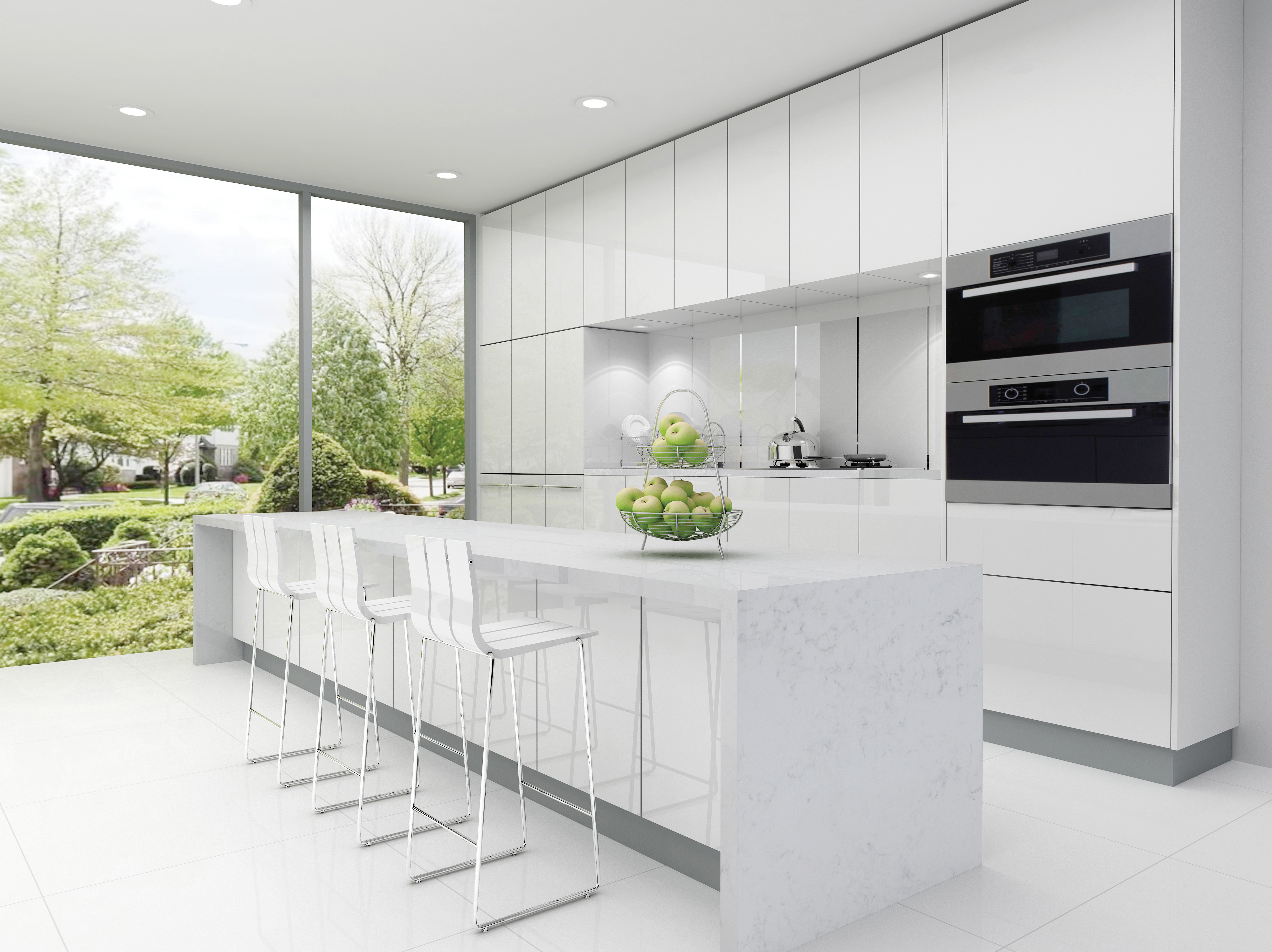When CR Laurence was told last year by Caesarstone that Caesarstone was taking over the stocking, sales and marketing of its products through its own subsidiary in the UK, CR Laurence responded by sourcing its own range of products.
Simon Boocock, the Managing Director of CR Laurence of Europe, and Dave Beckett, who fronts the CRL Stone business that had distributed Caesarstone since 2005, spoke about the CRL Stone response in the previous issue of Natural Stone Specialist magazine.
First it introduced Ceralsio, a range of porcelain slabs 6mm and 12mm thick in a colour collection inspired by nature, ranging from Soft White through to Calacatta Gris and Ocean Stone.
The collection is suitable for kitchen and bathroom countertops, floor tiling and wall cladding in interior and exterior applications.
Then, on 3 January, came CRL Quartz Surfaces. In thicknesses of 20mm and 30mm, the quartz is available in jumbo format slabs measuring 3.2m x 1.6m, allowing for consistency in design over large spaces.
There are currently 32 colours available in the CRL Quartz range. The company says the breadth of the colour range is important as it enables designers to respond to key trends and to co-ordinate with furniture, appliances and flooring.
The range includes six whites. White surfaces are popular because they offer designers a striking contrast to coloured cabinetry. But not all whites are the same – hence the six on offer from CRL Stone. Whites keep getting whiter and CRL Quartz reckons its Ultra White is white in its purest form.
It is manufactured at a location close to the site of a natural white quartz quarry, which is the first step towards achieving Ultra White. The secret also lies in the blending. The quartz has to be ground down into a fine powder and carefully mixed and manufactured to achieve a solid white colour with no blemishes. The resulting Ultra White is the whitest of whites.
Both commercial and domestic customers and their designers seem to be buying into the quartz and porcelain stories in growing numbers, as many worktop fabricators testify. A report* published in May last year by AMA Research forecasting developments in the market to 2020 predicts continued growth in the stone and quartz sector.
They are not products suited to DIY and the research finds DIY is diminishing as homeowners increasingly turn to the professionals, especially as the kitchen is growing in importance as a favoured living area in the home.
AMA estimates the value of the kitchen and bathroom worktop market in 2015 at more than £200million.
The advantages of quartz over natural stone have only increased as fashions have moved away from dark colours and granite towards lighter colours and marble. Marble and limestone have a look people want but are too easily stained, etched and scratched to be widely popular for worksurfaces. The latest quartz colours offer a similar look in a range of resilient and easily maintained products.
The reason quartz is consistent and resilient is because it is made that way. The manufacturing process begins with a thorough inspection of all the raw materials, to ensure they are 100% suitable. While the main ingredient is predominantly natural quartz, pigments and polymer resins are also added. Once blended together, the raw materials are poured into a mould to form slabs which are vibrated, pressed and cured to make them strong and solid. Once cured, the slabs are calibrated and given the required finish, passing through quality control before being packed ready for distribution.
* Domestic Kitchen and Bathroom Worktop Market Report - UK 2016-2020 Analysis. Published: May 2016. Pages: 69. Price: £745. From: AMA Research. www.amaresearch.co.uk
